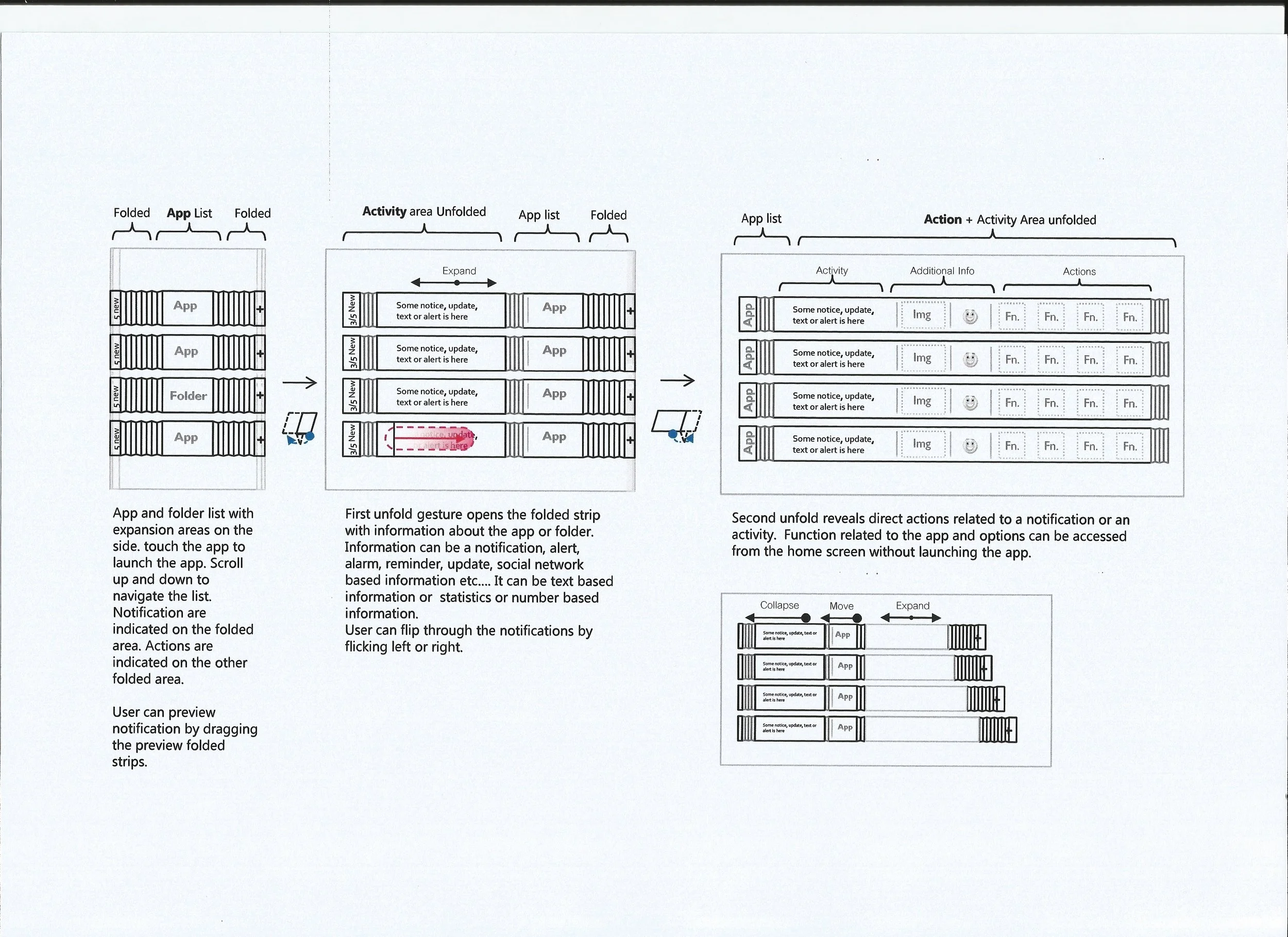Flexible Mobile Device User Experience
Our team of designers, S/W developers and H/W engineers was responsible for developing and envisioning UX frameworks, guidelines, road-map, prototyping and form factors for proprietary flexible display technology at Samsung. Collaborating with scientists we laid the foundation of how a flexible display would be used in the future. We designed products, interaction methods, visual designs, applications and built user scenarios. We did extensive user research, industry experts interviews and published research on our findings.
Flexible Device human interface guideline
We worked with universities and students to get user feedback on flexible device interactions. We studied level of difficulty, discomfort, intuition and effortlessness for scenarios and tasks. We came up with a range of physical gesture inputs that could be used with a broad range of activities and devices. We created these keeping the least and most flexible technology in mind that could be crushed like a paper to that was as stiff as a thick plastic sheet. We published a human interface guideline document outlining our gestures, interactions and best uses of each gestures with scenarios.
Wireframes, sketches and Explorations
Sketched home-UI, music apps, reading apps, email apps, watch faces and numerous other ideas with various folding patterns, form factors, wearables and possibilities. We made videos and mocks in hi-fidelity for some executive buy-ins and created intellectual property for some big ideas. Ultimately this project became the most strategic project that would go on to define the design leadership of Samsung in the industry and become a key differentiator. Our proposed roadmap to pursue mobile devices in order of curved then partially bendable, then foldable, rollable and finally fully flexible was accepted by mobile and display business divisions and became part of their business strategy.



































